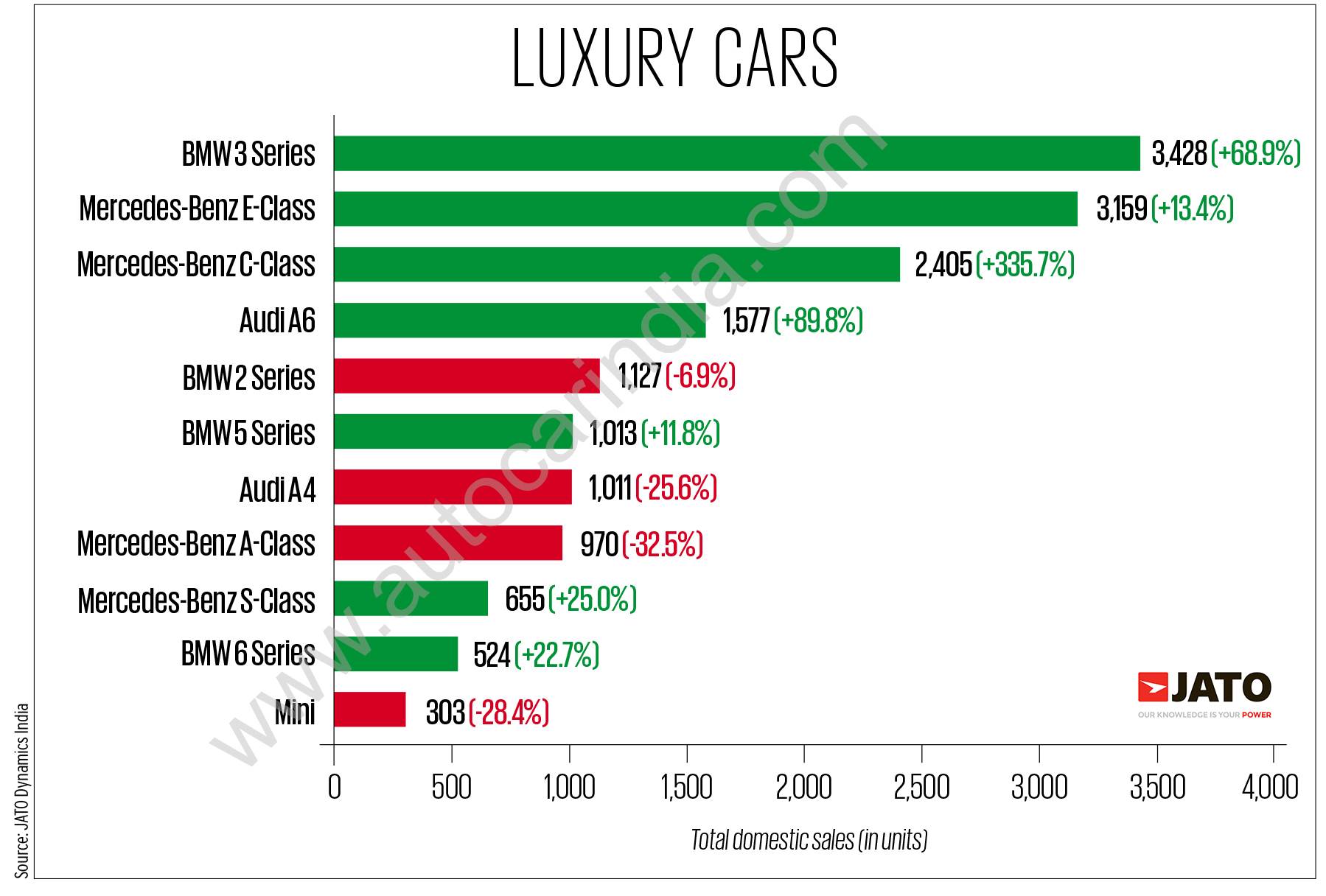Luxury Car Sales In China: Challenges And Opportunities For Western Brands

Table of Contents
Understanding the Chinese Luxury Car Consumer
The Chinese luxury car buyer is evolving, presenting both opportunities and challenges for Western brands. Understanding these shifts is crucial for success.
Shifting Demographics and Preferences
- Age: The traditional image of the older, established luxury car buyer is changing. A younger generation, aged 25-40, increasingly drives luxury car purchases, often prioritizing technological features and personalized experiences.
- Income: While high disposable income remains a key factor, the source of that income is diversifying. Entrepreneurs and professionals in burgeoning tech industries are prominent players, alongside established business owners.
- Location: While Tier 1 cities (Beijing, Shanghai, Guangzhou, Shenzhen) remain key markets, significant growth is occurring in Tier 2 and Tier 3 cities, indicating a broader appeal of luxury vehicles.
- Brand Loyalty: Traditional brand loyalty is less pronounced than in Western markets. Chinese consumers are more open to exploring various brands, making a strong brand image and compelling narrative vital.
- Technology: Advanced technology features, including autonomous driving capabilities, sophisticated infotainment systems, and connectivity features, are highly desirable amongst Chinese luxury car buyers. Design preferences also reflect this technologically-driven mindset, with sleek, modern aesthetics favoured.
The Importance of Brand Image and Storytelling
Brand perception is paramount in the Chinese luxury car market. Successfully cultivating a positive brand image requires more than just product quality; it necessitates a strong narrative that resonates with Chinese consumers.
- Luxury Branding in China: Positioning a brand effectively requires understanding the cultural values and aspirations of the target audience. Luxury is often associated with success, status, and social mobility.
- Digital Marketing and Social Media: Social media platforms like WeChat and Weibo are essential for reaching Chinese consumers. Influencer marketing and targeted digital advertising campaigns are crucial for building brand awareness and driving engagement.
- Storytelling: Crafting a compelling brand narrative that connects with Chinese cultural values and aspirations is vital. This could involve highlighting the brand's heritage, emphasizing craftsmanship, or focusing on sustainability and social responsibility.
Key Challenges for Western Luxury Car Brands
While the opportunities are substantial, several challenges confront Western luxury car brands attempting to conquer the Chinese luxury car market.
Competition from Domestic Brands
The rise of domestic Chinese luxury car brands poses a significant challenge to Western competitors.
- Competitive Landscape: Brands like Hongqi, Lynk & Co, and Nio are aggressively capturing market share, leveraging their understanding of local preferences and offering competitive pricing.
- Competitive Advantages: Domestic brands often boast better after-sales service, more localized features, and stronger relationships with local dealerships, giving them an edge in the market.
- Market Share: The increased market share of domestic brands necessitates a strategic response from Western competitors who need to differentiate themselves and adapt their offerings to maintain competitiveness.
Navigating Regulatory Hurdles and Tariffs
The Chinese regulatory environment presents complexities for foreign automakers.
- Import Regulations: Strict import regulations and tariffs impact pricing and profitability. Understanding and navigating these regulations is crucial for successful market entry and operation.
- Chinese Automotive Regulations: Compliance with stringent safety and emission standards adds to the operational complexity of the market.
- Market Access: Securing distribution channels and building a strong dealer network requires significant investment and strategic partnerships.
Building Trust and Addressing Cultural Nuances
Building trust with Chinese consumers is paramount. Understanding and respecting cultural nuances is essential for establishing strong brand relationships.
- Cultural Sensitivity: Western brands need to demonstrate cultural sensitivity and understanding of local customs and traditions in their marketing and communication strategies.
- Consumer Trust: Building trust requires transparency, high-quality customer service, and a commitment to providing a positive customer experience.
- Localization Strategy: Adapting products and marketing materials to resonate with local preferences is essential for gaining consumer acceptance.
Opportunities for Growth and Expansion
Despite the challenges, the Chinese luxury car market offers significant opportunities for growth and expansion.
Untapped Market Potential in Tier 2 and Tier 3 Cities
Beyond the major metropolitan areas, considerable potential exists in less saturated markets.
- Market Expansion: Targeting Tier 2 and Tier 3 cities can unlock significant growth opportunities, as consumer demand increases in these regions.
- Untapped Markets: These regions represent a largely untapped market for luxury car brands, offering significant potential for expansion.
- Regional Marketing Strategies: Tailoring marketing campaigns to resonate with the specific cultural and economic contexts of these regions is essential for success.
Leveraging Technological Advancements
Technological advancements present significant opportunities for differentiation and growth.
- Electric Vehicles (EVs): The Chinese government's strong push for electric vehicles presents a significant opportunity for brands that invest in this segment.
- Autonomous Driving: Investing in and developing autonomous driving technology can position brands at the forefront of innovation in the Chinese market.
- Connected Car Technology: Integrating advanced connected car features can enhance the overall customer experience and create a competitive advantage.
Strategic Partnerships and Joint Ventures
Collaborating with local partners can overcome many market entry challenges.
- Strategic Partnerships: Forming strategic partnerships with local companies can facilitate market entry, navigate regulatory hurdles, and leverage local expertise.
- Joint Ventures: Joint ventures can provide access to local distribution networks, manufacturing facilities, and consumer insights.
- Local Partnerships: Collaborating with local dealers and distributors can help build a strong presence in the market and enhance brand visibility.
Seizing the Potential of Luxury Car Sales in China
The Chinese luxury car market presents both significant challenges and immense opportunities for Western brands. Success requires a deep understanding of the Chinese consumer, a strategic approach to navigating regulatory complexities, and a commitment to leveraging the market's considerable growth potential. By understanding the nuances of the Chinese luxury car market and adapting their strategies accordingly, Western brands can successfully navigate the challenges and unlock the immense potential of luxury car sales in China. Conduct thorough market research, develop targeted marketing campaigns, and prioritize building strong relationships with Chinese consumers to seize this lucrative market’s potential.

Featured Posts
-
 Conseil Metropolitain De Dijon Le Projet De 3e Ligne De Tramway Adopte Apres Concertation
May 10, 2025
Conseil Metropolitain De Dijon Le Projet De 3e Ligne De Tramway Adopte Apres Concertation
May 10, 2025 -
 Riski Novogo Naplyva Ukrainskikh Bezhentsev V Germaniyu Vzglyad Iz Berlina
May 10, 2025
Riski Novogo Naplyva Ukrainskikh Bezhentsev V Germaniyu Vzglyad Iz Berlina
May 10, 2025 -
 Lynk Lee Sau Chuyen Gioi Hanh Trinh Lot Xac Va Cau Chuyen Tinh Yeu Dep
May 10, 2025
Lynk Lee Sau Chuyen Gioi Hanh Trinh Lot Xac Va Cau Chuyen Tinh Yeu Dep
May 10, 2025 -
 Felony Stalking And Vandalism Charges Filed Against Man Who Crashed Into Jennifer Anistons Property
May 10, 2025
Felony Stalking And Vandalism Charges Filed Against Man Who Crashed Into Jennifer Anistons Property
May 10, 2025 -
 Aocs Fact Check Of Jeanine Pirro Key Moments And Takeaways
May 10, 2025
Aocs Fact Check Of Jeanine Pirro Key Moments And Takeaways
May 10, 2025
